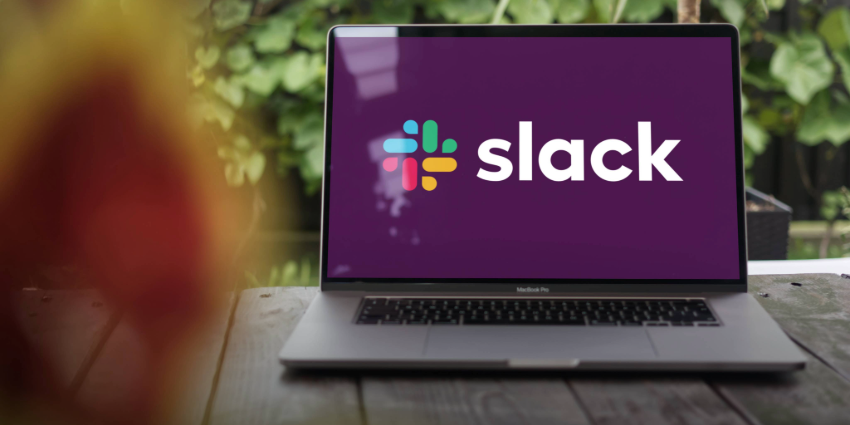Inside every enterprise, conversations never stop. Sales calls. All-hands meetings. Product syncs. Customer complaints. It’s a constant stream of data, spoken, typed, recorded, and pinged across half a dozen platforms. But for all that chatter, the truth is this: most businesses still have no idea what their conversations are really saying.
Not because the information isn’t there. But because it’s often buried. There are endless insights to collect from tone shifts, in patterns, in repeated questions and quiet objections. The signal’s in the noise. You just need the right tools to hear it.
That’s why companies are increasingly exploring conversational intelligence use cases – keen to gather more insights from endless data. So, how exactly can you use CI tools in enterprises? Here are the applications you should be experimenting with.
Conversational Intelligence Use Cases: Real ROI Drivers
The first wave of conversational intelligence use cases focused on sales coaching and contact center quality assurance. But that’s just the beginning. CI is becoming a foundational layer in every form of enterprise communication. It’s embedded in Microsoft Teams meetings and runs quietly in the background of Zoom calls. It’s surfacing in Slack threads, support chats, and CRM workflows.
Today’s most advanced CI platforms don’t just summarize, they interpret. They flag risks, prompt next steps, detect emotion, and turn a routine meeting into a source of measurable value.
So, where exactly is it working? Let’s break it down.
Sales: Turning Conversations into Conversions
Sales is loud. It’s high-pressure, target-driven, filled with nuance, and often the place where CI shows its value fastest. Just look at Verse.AI – the company that boosted forecast accuracy by 25 percent and increased revenue from closed-won deals by 76 percent with Gong. Or, how about Aiden Technologies, the company that boosted sales teams’ efficiency by 33 percent with Otter.ai?
In sales, conversational intelligence use cases go beyond recording and reviewing calls. They can detect opportunities and risks lightning-fast, and even coach employees in real-time. For instance, imagine a sales rep in mid-demo. The prospect pauses when pricing comes up.
CI detects the hesitation, recognizes it as a common objection trigger, and nudges the rep with a real-time prompt: slow down, reinforce value, suggest the bundled package. The right tools can even analyze huge numbers of calls and conversations, helping teams codify what works and share it across the organization. Plus, many tools integrate directly with CRMs, like Salesforce, HubSpot, and Dynamics, automatically enriching records based on conversation content.
In sales, CI delivers:
- Faster ramp time for new reps
- Increased win rates through real-time objection handling
- Better forecasting through deal health visibility
- Scalable coaching without needing a manager on every call
Conversational Intelligence Use Cases: Customer Service
Support teams have no shortage of conversations. But when your agents are juggling dozens or hundreds of tickets, chats, and calls every day, it’s easy for warning signs to slip past unnoticed. That’s why when companies look at conversational intelligence use cases, they often start with support teams. Unlike traditional QA, CI platforms don’t just score random samples.
They analyze 100 percent of conversations. Every tone shift, escalation and moment of friction is captured in real time. Carvana, for instance, used Microsoft’s AI tools to build its own “CARE” platform – a solution that analyzes millions of customer conversations, helping the company find and solve problems faster, and coach teams more efficiently.
Just like CI tools can help with training and onboarding sales professionals, they’re great at elevating the performance of support agents, too. Let’s say an agent escalates a call that didn’t really require it. CI picks that up, and over time, learns to flag similar interactions as coaching opportunities. That kind of micro-optimization used to take months of QA review.
Take Auckland Eye, for example. With Dialpad’s CI features, they reduced new agents’ onboarding time and improved their CSAT scores by focusing coaching on real conversational patterns, not generic scripts.
CI doesn’t just improve individual performance; it unearths systemic trends. Maybe a confusing billing update is generating repeat questions. Maybe a new product line is triggering frustration. Or maybe tone analysis shows that a certain escalation path leaves customers feeling ignored, even if the SLA is technically met. Key outcomes for CI in customer service include:
- Real-time issue detection before tickets spike
- Faster and smarter onboarding for agents
- Sentiment-based routing and escalation
- Voice-of-the-customer insights for product and CX teams
HR: Making Culture and Employee Experience Measurable
Most companies desperately need better visibility into what’s actually going on inside their teams, particularly now that employees are distributed across so many locations and platforms. For organizations looking for conversational AI use cases, enhancing employee experiences is a great place to start. For instance, in meetings, CI tools can detect a lot.
They can show you when one person dominates the conversation, and another never speaks, which questions are answered but never answered, and which goals are discussed and not assigned.
Tools like Zoom’s AI Companion, Cresta, and Otter.ai now offer live meeting analysis that goes way beyond transcription. They measure sentiment. Track talk time. Highlight missed follow-ups. Some even generate “meeting health” scores based on collaboration dynamics.
This matters because behind every lagging KPI, burnout, low morale, and attrition is often a conversation that didn’t go well. CI offers a different kind of pulse check—one that doesn’t rely on end-of-quarter surveys or anecdotal feedback. It lets HR leaders see communication breakdowns before they harden into culture problems.
It also helps with inclusivity. Want to know if all voices are being heard in strategy sessions? Want to check if team feedback actually gets followed up on? CI gives you that data. For HR teams, CI tools are incredible for:
- Analyzing internal meetings for clarity, equity, and engagement
- Surfacing unspoken tension in teams through sentiment tracking
- Identifying overburdened contributors by meeting load or talk time
- Supporting DEI initiatives with communication pattern analysis
Conversational Intelligence Use Cases: Compliance
We all know compliance in the enterprise is getting more complex. One missed disclaimer, one overly ambitious promise, one misunderstood phrase, and suddenly you’re dealing with a world of issues, from lost customers to fines.
That’s why some of the most impactful conversational intelligence use cases sit inside compliance, legal, and risk teams. This is especially true in highly regulated industries like finance, insurance, and healthcare, but increasingly in every enterprise where data governance matters.
Imagine this:
- A call starts.
- A rep forgets to mention that the call is being recorded.
- CI detects the omission in real time and prompts a correction.
But it’s not just about script enforcement. CI also tracks intent, tone, and risky language combinations. If a rep says something that sounds like a guarantee (“we’ll definitely get that to you by Friday”), CI can flag it if it contradicts internal policy.
These systems also create paper trails. They deliver searchable, timestamped, tamper-resistant audit logs of every flagged moment across channels. Perfect for internal reviews or regulatory response.
Third-party CI platforms like Chorus, Dubber, and AssemblyAI go a step further, with multi-language detection, emotion-layered transcripts, and customizable keyword libraries. If you need to flag anything from legal disclaimers to HIPAA-violating phrases, it can be configured and scaled automatically. The overall benefits:
- Real-time flagging of script violations or misleading statements
- Time-stamped records for audit readiness
- Detection of sentiment mismatch in regulated disclosures
- Pattern recognition across teams and regions to refine training
Executive Teams: Elevating Decision Intelligence
Some of the most valuable conversational intelligence use cases start at the very top: enabling leaders to make decisions with insight, not instinct.
Let’s say you lead a regional sales organization. You don’t have time to listen to 300 calls a week. But what if your CI platform summarized every deal’s momentum, flagged stuck opportunities, and even highlighted when pricing pushback spiked last quarter?
Or imagine your product roadmap session. CI can surface the actual themes discussed, who contributed, which questions were unresolved, and what tone dominated the room. That’s not just documentation; it’s culture in data form.
One of the smartest examples comes from Gainsight. After integrating Zoom’s conversational insights, their exec team gained visibility into support trends and customer success themes across thousands of calls. That led to faster alignment between CX and product.
CI doesn’t just help execs see what’s happening. It helps them connect the dots between departments. Sales hears X. Product hears Y. Support hears Z. With CI, those conversations don’t live in silos anymore, they converge. Executive teams can take advantage of:
- Thematic meeting summaries and trend tracking
- Cross-functional pattern visibility (sales, support, HR, product)
- Detection of communication gaps or culture issues
- Decision-making rooted in real, unfiltered conversational data
Make Every Conversation Count
Every enterprise has conversations. What defines the leaders is how they use them.
In the past, meetings were forgotten, sales calls went unreviewed, support tickets lived in silos, and leaders made decisions with partial information or gut instinct. CI changes everything.
Conversational intelligence use cases now stretch across the enterprise, from sales coaching and sentiment alerts to HR pulse checks and compliance safeguards. Ready to discover the opportunities for yourself? Learn how to compare conversational intelligence tools here, or check out our comprehensive guide to why every company should be investing in CI solutions.
It’s time to dive deeper into your conversations and make every discussion count.







